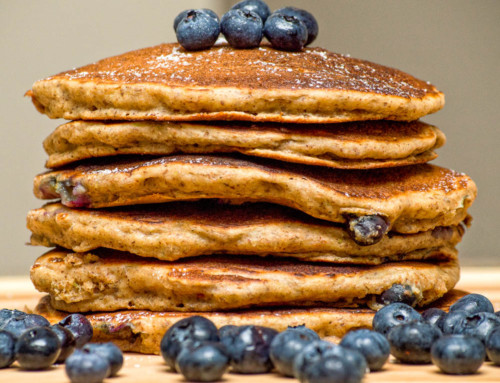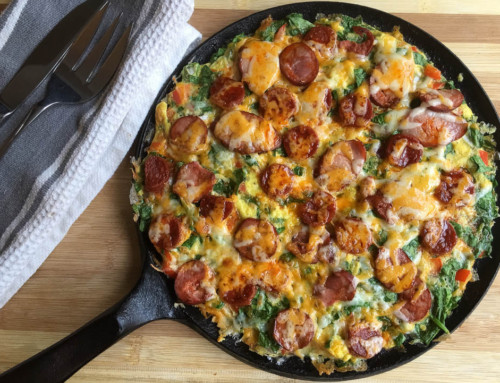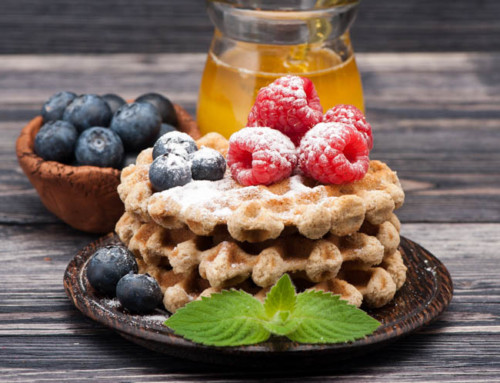Our main topic of food and metabolism is continued here with a focus on superfoods as a link towards boosting metabolism by increasing metabolic rate. Often we search and explore different foods to increase our metabolism – a desired metabolic response of superfoods. We look for terms on food labels with emphasis on metabolism, fat burning, or muscle building. A word of caution, majority of these foods are marketed for their properties but, they are also strategically combined with other nutritionally inferior, high calorie products. This allows the marketer to exploit the benefits of a minor ingredient – superfood – while presenting the total package as a more “healthier” option. Such foods become the means for food companies to sell their product, thus creating a fad food. As for the consumer, we are often misdirected by this marketing and can fall under a false sense of security that a little sprinkle of superfood is all we need – this is not always the case. Regardless of nutritional benefits, no food or product should be utilized as a “pill” concept in order to improve your health. The goal of health is a continuous quest towards longevity involving strong nutritional foundation comprised of a vast food profile. Lets consider the following foods that are often associated with boosting metabolism.
Metabolic Response of Superfoods
Herbs and Spices – cinnamon, pepper, turmeric, ginger, garlic, mint
The above mentioned foods are all whole and naturally occurring. Taking cinnamon as an example, it is noted to have thermogenic properties. Meaning, when you eat cinnamon the body responds by raising its temperature, which uses more energy by burning extra calories. Though these properties are beneficial, but not widely applicable as very few of us will add cinnamon to water and drink it. The more realistic usage of cinnamon is in a dessert or hot milky drink such as a latte. Options like, pumpkin spice (cinnamon) latte to boost your metabolism often contains copious amount of empty calories including added sugar, whipping cream and optional toppings like sprinkles (more sugar). Adding some cinnamon to this latte will negate any benefits compared to substantial caloric intake within this drink. The same principles apply when considering other spices including pepper, turmeric, ginger, garlic and mint – found in favourite foods like butter chicken, thai coconut curry or spicy pulled pork. Again, spice benefits within such meals are counterbalanced by the added sugar, salt, cream, butter and other delicious condiments. Furthermore, these delicious sauces are often accompanied by fast absorbing breads/rice that lead to a spike in insulin levels. Adding herbs and spices to a calorie rich meals will enhances overall flavour but, will not assist in trimming the waist line.
Nuts and Seeds – almonds, chia seeds, hemp seeds
Satiety, the feeling of fullness is another desired attribute for metabolism boosting foods. Longer the food stays in your stomach, less likely you are to overeat. Foods that contain good fats along with protein and fiber accomplish such feat well. Nuts and seeds contain all of these nutritional properties, thus often referred to as metabolism boosting foods. However, a word of caution as to how these foods are consumed. Nuts with added toppings/seasoning like tamari almonds, sugar covered cashews and peanut brittle will do little towards satiety. The added salt and sugar to these nuts turns off our satiety channels. When it comes to seeds, same consumption principles apply, and inclusion of these foods within overall meal or snack. Selecting between a take-out sweet chia seed pudding or a vegetable salad topped with hemp seeds – generates significantly different metabolic responses. Also, we need to be cognitive of these principles the next time reaching for a nut and seed power bar – mostly made of fast carbs and sugar with a few nuts/seeds thrown in.
 Berries – all types not just blueberries
Berries – all types not just blueberries
Blueberries are stated to be the superfood berry, but antioxidants found in berries and other fruits/vegetables all help fight free radicals generated during exercise and daily work. Berries, including blueberries, are full of vitamins and natural sugar making them a great addition to daily porridge and smoothies. Berries can be consumed fresh or frozen, making them a convenient option for any kitchen. Berries, fruits and vegetables contain other nutritional benefits including vitamins, minerals and fiber. Therefore, adding a piece of fruit or handful of berries to your morning meal will enhance nutritional profile as well as metabolism. However, a bottle of sugar filled pre-packaged blueberry juice or fast absorbing carbohydrate blueberry muffin from a take-out place will not have the same benefits.
Protein – lean meats like turkey and chicken
Some foods have metabolic benefits based on extended periods of digestion and absorption. Longer the digestion phase of a food product, the greater caloric expenditure is needed to complete the process. Such is the reasoning for foods with high protein and fiber contents. Numerous research papers state, protein takes longer to breakdown and digest due to its a large, organic structure. Furthermore, the extensive biochemical process involves numerous enzymes using significant energy. As with all foods, not all proteins are created equal and quality of each product contributes towards overall metabolic response. For example, processed turkey cold cuts or chicken nuggets are highly processed and therefore easily digested. These meats will not have the same extended periods of digestion and absorption as a home cooked lightly seasoned chicken breast. Furthermore, the added calories from the breaded, seasoned (comprised of salt and sugar), and preservative filled meats will negate the little protein content benefits towards overall metabolic equation.
Fibrous Foods – celery, beans, grapefruit
Fibrous foods like beans, grapefruit and most vegetables for that matter are low in calories and high in fiber. The benefits of foods high in fiber consist of energy/calories elimination as waste products while providing nourishment to gut bacteria, improving its growth and health. Beans and lentils are good options for any house hold, but be cautious in their preparation methods. Cooking such fibrous foods in a water base stock while minimizing the addition of cream, milk or cheese is a preferred method. This way, you maximize on fiber benefits while keeping caloric intake relatively low. In addition, be careful when pairing fibrous fruits and vegetable with dips of nutritional poor content. Choices like vegetables and ranch dip or apple slices with sweet almond butter are not calorie wise options.
Water, tea and coffee
All foods have an impact on our body and caffeine is no different. Caffeine is a central nervous system stimulant affecting autonomic system – through increasing heart rate while enhancing brain activity resulting in burning extra calories. However, very few of us drink coffee or tea without added sugar, milk, cream or even a treat like a donut or cookie. So, be cautious of this fact and opt out for a plain dark coffee or a tea whenever possible. Water is the medium in which all metabolic reactions take place, and most of us simply don’t drink enough water. Water is an important factor within a healthy metabolism and needs to be consumed in its natural, plain form.
Final Thoughts
There is no particular food product or group that significantly increases metabolism. The reality of sustainable health and longevity lies within eating nutritionally dense food choices combined with physical exercise. Consuming whole, natural foods from the ground whenever possible is the key towards health. Such foods are naturally rich in protein, complex carbohydrates like fiber, along with essential fats. An important note, only about 10% of average daily calories are burned via diet-induced thermogenesis. Rather than focus on which foods to eat and which to avoid, the goal of increasing metabolism needs to be paved through sensible eating and exercise habits. Our The-No Diet Book is written for busy lifestyles with incremental strategies to break away from take-out food dependance – by cleansing our palate from biochemical addictions to sugar, salt and fat. Targeted training plans improve body’s response and metabolism through increased lean body mass, raised bioenergy systems and metabolic flexibility. For more details on a year long physical exercise progressions, please learn more about our Stronger Leaner Faster Books.





